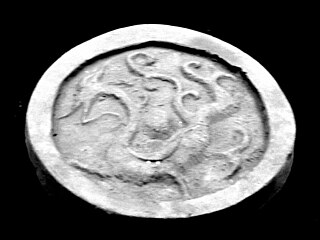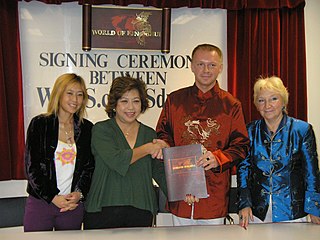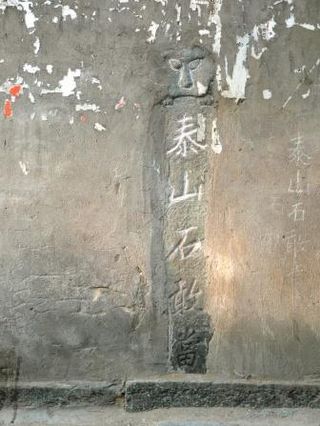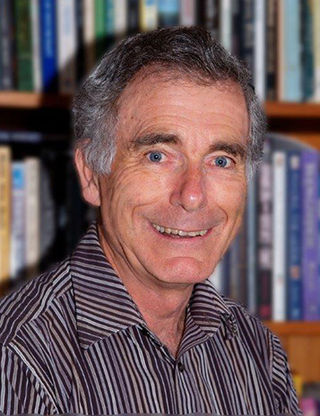
Feng shui ( ), sometimes called Chinese geomancy, is an ancient Chinese traditional practice which claims to use energy forces to harmonize individuals with their surrounding environment. The term feng shui means, literally, "wind-water". From ancient times, landscapes and bodies of water were thought to direct the flow of the universal Qi – "cosmic current" or energy – through places and structures. More broadly, feng shui includes astronomical, astrological, architectural, cosmological, geographical and topographical dimensions.

The Luoshu (pinyin), Lo Shu (Wade-Giles), or Nine Halls Diagram is an ancient Chinese diagram and named for the Luo River near Luoyang, Henan. The Luoshu appears in myths concerning the invention of writing by Cangjie and other culture heroes. It is a unique normal magic square of order three. It is usually paired with the River Map or Hetu—named in reference to the Yellow River—and used with the River Map in various contexts involving Chinese geomancy, numerology, philosophy, and early natural science.

Japanese gardens are traditional gardens whose designs are accompanied by Japanese aesthetics and philosophical ideas, avoid artificial ornamentation, and highlight the natural landscape. Plants and worn, aged materials are generally used by Japanese garden designers to suggest a natural landscape, and to express the fragility of existence as well as time's unstoppable advance. Ancient Japanese art inspired past garden designers. Water is an important feature of many gardens, as are rocks and often gravel. Despite there being many attractive Japanese flowering plants, herbaceous flowers generally play much less of a role in Japanese gardens than in the West, though seasonally flowering shrubs and trees are important, all the more dramatic because of the contrast with the usual predominant green. Evergreen plants are "the bones of the garden" in Japan. Though a natural-seeming appearance is the aim, Japanese gardeners often shape their plants, including trees, with great rigour.

Chinese architecture is the embodiment of an architectural style that has developed over millennia in China and it has influenced architecture throughout East Asia. Since its emergence during the early ancient era, the structural principles of its architecture have remained largely unchanged. The main changes involved diverse decorative details. Starting with the Tang dynasty, Chinese architecture has had a major influence on the architectural styles of neighbouring East Asian countries such as Japan, Korea, and Mongolia in addition to minor influences on the architecture of Southeast and South Asia including the countries of Malaysia, Singapore, Indonesia, Vietnam, Sri Lanka, Thailand, Laos, Cambodia and the Philippines.
Catherine Lim Poh Imm is a Singaporean fiction author known for writing about Singapore society and of themes of traditional Chinese culture. Hailed as the "doyenne of Singapore writers", Lim has published nine collections of short stories, five novels, two poetry collections, and numerous political commentaries to date. Her social commentary in 1994, titled The PAP and the people - A Great Affective Divide and published in The Straits Times, criticised the ruling political party's agendas.

The bagua or pakua (八卦) are a set of eight symbols that originated in China, used in Taoist cosmology to represent the fundamental principles of reality, seen as a range of eight interrelated concepts. Each consists of three lines, each line either "broken" or "unbroken", respectively representing yin or yang. Due to their tripartite structure, they are often referred to as Eight Trigrams in English.

The Azure Dragon, also known as Qinglong in Chinese, is one of the Dragon Gods who represent the mount or chthonic forces of the Five Regions' Highest Deities. He is also one of the Four Symbols of the Chinese constellations, which are the astral representations of the Wufang Shangdi. The Azure Dragon represents the east and the spring season. It is also sometimes referred to as the Blue-green Dragon, Green Dragon, or the Blue Dragon.

Lillian Too is an author, television personality and feng shui practitioner from Malaysia. She has written over 200 books on the subject of feng shui, which have been translated into more than 30 languages. Her books have sold more 6 million copies around the world.
Proponents and practitioners of various esoteric forms of spirituality and alternative medicine refer to a variety of claimed experiences and phenomena as being due to "energy" or "force" that defy measurement and thus are distinguished from the scientific form of energy.
Locational astrology is any of various types of astrology that factor in specific locations of the Earth. The different types also carry a range of astrological techniques.

The luopan or geomantic compass is a Chinese magnetic compass, also known as a feng shui compass. It is used by a feng shui practitioner to determine the precise direction of a structure, place or item. Luo Pan contains many informations and formulas regarding its functions. The needle points towards the south magnetic pole.

Chinese spiritual world concepts are cultural practices or methods found in Chinese culture. Some fit in the realms of a particular religion, others do not. In general these concepts were uniquely evolved from the Chinese values of filial piety, tacit acknowledgment of the co-existence of the living and the deceased, and the belief in causality and reincarnation, with or without religious overtones.

Morten Strange is a Danish-born, Singapore-based independent financial analyst. He is a former bird photographer, author and publisher. Strange was born in Copenhagen, Denmark, and studied economics at Aarhus University 1971-73; he served in the Danish army as a sergeant in the field artillery. From 1974, Strange worked in the offshore oil industry in the North Sea and later in South-east Asia and China as a field services engineer; he retired from the oil business in 1986 as a field services supervisor. Since then, Strange has worked for the Danish Ornithological Society, for Nature's Niche Pte Ltd and for Draco Publishing and Distribution Pte Ltd. Strange was based in Singapore from 1980 to 1993 and again from 1999 onwards, and is now a Singapore permanent resident; he is the father of four sons from two marriages.
Tan Khoon Yong is a fengshui grand master from Singapore. He established Way Chinese Geomancy Centre, now Way Fengshui Group, in 1984. He has conducted numerous seminars, including an annual "Chinese Zodiac & Fengshui Seminar".

Richard Webster is an author, ghostwriter, mentalist, hypnotist, wikipedia editor and magician.
9 Star Ki is a popular system of astrology, often used alongside Feng shui. It is an adjustment or consolidation, made in 1924 by Shinjiro Sonoda (1876–1961), to traditional Chinese divination and geomancy methods, such as Flying Star Feng Shui, the Ming Gua number from the Eight Mansions Compass School of Feng Shui, and combining the Lo Shu Square with the "Later Heaven" Bagua.

Stephen Skinner is an Australian author, editor, publisher and lecturer. He is known for authoring books on magic, feng shui, sacred geometry and alchemy. He has published more than 46 books in more than 20 languages.
Regent Alfred John Bidwell, or R. A. J. Bidwell, was an English-born architect noted for his colonial era buildings in Singapore. His best-known works include the Raffles Hotel and the Victoria Theatre and Concert Hall in Singapore, and Sultan Abdul Samad Building in Kuala Lumpur.

The Orchard Road Presbyterian Church, also known as Greja Kechil and the Scotch Church, is a Presbyterian church in Singapore. The church was completed in 1878, and it is the oldest Presbyterian church in Singapore. The church was founded to serve the Scottish community in Singapore, but now caters to a congregation of a widely different background and holds services in a number of different languages.

Traditional Chinese house architecture refers to a historical series of architecture styles and design elements that were commonly utilised in the building of civilian homes during the imperial era of ancient China. Throughout this two-thousand year long period, significant innovations and variations of homes existed, but house design generally incorporated a set of qualities that made Chinese home architecture distinct from that of other cultures and regions. As highlighted by the classic siheyuan style, this included an emphasis on extended family units in a single dwelling, distinct separation of various elements of the household, alignment with the cardinal directions and wooden construction; all in line with Confucian hierarchy and Feng Shui.













